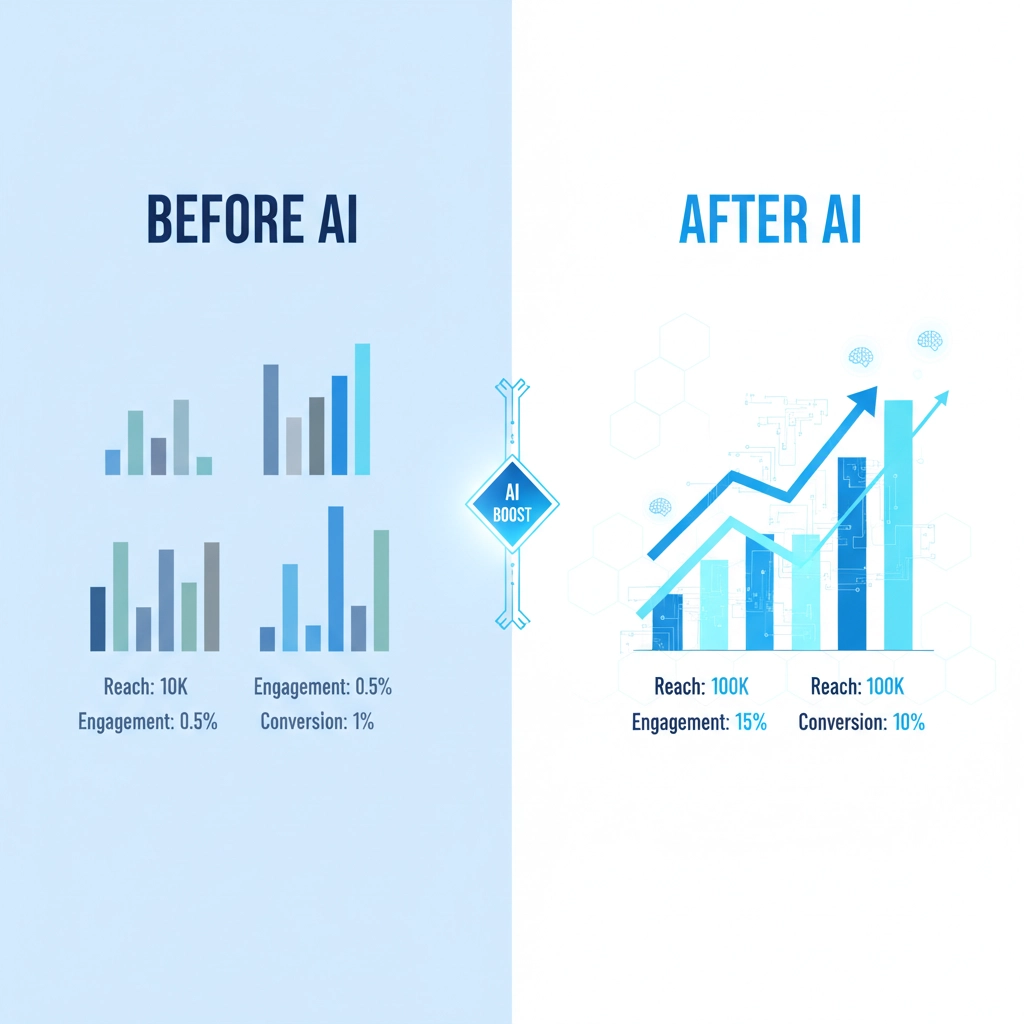How to Integrate AI Into Your Digital Marketing in 5 Minutes (Even Without Tech Skills)

The biggest myth about AI in digital marketing? That you need a computer science degree to use it effectively. The reality is that integrating AI into your marketing strategy can happen faster than making your morning coffee – and you don't need to write a single line of code.
Most business owners think AI integration means complex technical setups, expensive software, or months of training. But today's AI tools are designed for regular people who want better results without the technical headache. You can start seeing improvements in your marketing efforts within minutes, not months.
The 5-Minute AI Integration Framework
Here's exactly how to get AI working for your marketing in under five minutes:
Minute 1: Pick Your Pain Point Start with the marketing task that eats up most of your time. Is it writing social media captions? Creating email subject lines? Brainstorming content ideas? Don't try to revolutionize everything at once – focus on one specific, repetitive task that you do weekly.
Minute 2: Choose Your Tool For content creation, open ChatGPT (it's free). For visual content, try Canva's AI features. For email marketing, most platforms like Mailchimp already have AI built in. The key is picking one tool that directly addresses your chosen pain point.
Minute 3: Create Your First Prompt This is where the magic happens. Instead of staring at a blank page, tell the AI exactly what you need. For example: "Write 5 engaging Instagram captions for a local bakery's new cupcake flavors, include emojis and relevant hashtags."
Minute 4: Test and Refine Run the AI-generated content alongside your usual approach. Don't replace everything immediately – test it. Post the AI-generated caption and see how it performs compared to your typical posts.
Minute 5: Document What Works Keep track of which prompts give you the best results. This becomes your personal AI playbook for future use.

Zero-Tech-Skills AI Tools That Work Right Now
ChatGPT for Content Creation You don't need to understand how ChatGPT works – you just need to know how to have a conversation with it. Ask it to write email newsletters, social media posts, or blog outlines. The more specific you are about your business and audience, the better the results.
Think of ChatGPT as your always-available copywriter who never gets tired and works for free. Give it context: "I run a plumbing business in Little Rock. Write a Facebook post about the importance of winter pipe maintenance that sounds helpful, not salesy."
Canva's AI Magic Canva's AI features can create professional-looking graphics from simple text descriptions. Type "Instagram story for a real estate agent announcing a new listing" and watch it generate multiple design options. No design experience needed – just click, customize colors to match your brand, and you're done.
Email Platform AI Features Most email marketing platforms now include AI features that are turned on with a simple toggle. Mailchimp's AI can optimize your send times, suggest subject lines, and even predict which content will perform best. You're not learning new software – you're just turning on features in tools you already use.
Social Media Scheduling with AI Tools like Hootsuite and Buffer now include AI that suggests the best times to post, generates caption variations, and even recommends hashtags based on your content. Set it up once, and it runs on autopilot.
Quick Wins You Can Implement Today
Email Subject Line Optimization Instead of agonizing over email subject lines, ask AI to generate 10 variations. Test different approaches: questions, urgency, personalization, or curiosity-driven headlines. Most business owners see open rate improvements of 15-20% just from better subject lines.
Social Media Content Calendar Give AI your business details and ask for a month's worth of social media post ideas. It can generate themes, captions, and even suggest the best posting schedule. You'll go from scrambling for content ideas to having a planned strategy.
Customer Service Responses Create templates for common customer questions using AI. Instead of writing the same explanations repeatedly, develop AI-generated response templates that sound natural and helpful. Your response time improves, and your messaging stays consistent.

Blog Post Outlines and Ideas Struggling with content marketing? AI can generate blog post ideas based on your industry, create detailed outlines, and even suggest SEO-friendly headlines. You provide the expertise and personality – AI provides the structure and starting points.
The Right Way to Use AI (Without Sounding Like a Robot)
The biggest mistake businesses make is using AI-generated content without adding their personal touch. AI should enhance your voice, not replace it. Here's how to maintain authenticity:
Always Edit for Your Voice AI gives you a solid foundation, but you need to add your personality, local references, and specific business details. If you're a Little Rock business, mention local landmarks, events, or community connections that AI wouldn't know.
Use AI for Ideas, Not Final Products Think of AI as your brainstorming partner, not your replacement. It can suggest approaches, generate options, and help you overcome writer's block – but your industry knowledge and customer relationships are irreplaceable.
Test Everything Don't assume AI-generated content will work perfectly the first time. A/B test AI-generated social media posts against your usual content. Compare email campaigns with AI-suggested subject lines to your standard approach. Let the data guide your decisions.
Common Mistakes to Avoid
Trying to Do Everything at Once The fastest way to get overwhelmed is attempting to implement AI across every marketing channel simultaneously. Start with one specific task, master it, then expand. Success builds confidence, and confidence leads to better implementation.
Ignoring Your Brand Voice AI doesn't automatically understand your company's personality, values, or unique selling proposition. Always customize AI-generated content to match your brand's tone and messaging. Generic content performs poorly, regardless of how well it's written.
Not Measuring Results If you're not tracking performance, you won't know whether AI is actually improving your marketing. Set up simple metrics before implementing AI tools: social media engagement rates, email open rates, or website traffic from your content.

Relying Completely on AI AI is a powerful assistant, not a marketing manager. It can't replace strategic thinking, relationship building, or understanding your local market dynamics. Use it to handle repetitive tasks so you can focus on strategy and customer relationships.
Scaling Your AI Integration
Once you've mastered basic AI integration, you can expand systematically:
Week 1-2: Content Creation Focus on using AI for social media posts and email content. Get comfortable with prompting techniques and editing AI output to match your voice.
Week 3-4: Visual Content Add AI-powered design tools to create graphics, social media images, and simple promotional materials.
Month 2: Analytics and Optimization Start using AI features in your existing marketing platforms to optimize posting times, improve targeting, and personalize customer experiences.
Month 3+: Strategic Planning Use AI for competitive analysis, market research, and strategic planning. By this point, you'll have enough experience to tackle more complex applications.
The key to successful AI integration isn't technical expertise – it's knowing where to start and being willing to experiment. Most businesses that struggle with AI try to boil the ocean instead of focusing on one specific improvement.
Your marketing doesn't need a complete overhaul to benefit from AI. It needs strategic enhancement of tasks you're already doing. Start with five minutes, pick one tool, solve one problem, and build from there. The businesses winning with AI aren't the ones with the most sophisticated setups – they're the ones who started simple and stayed consistent.
Remember, AI is just a tool. Your understanding of your customers, your local market knowledge, and your business expertise are what make the difference. AI just makes it easier to apply that knowledge consistently and efficiently across all your marketing efforts.



